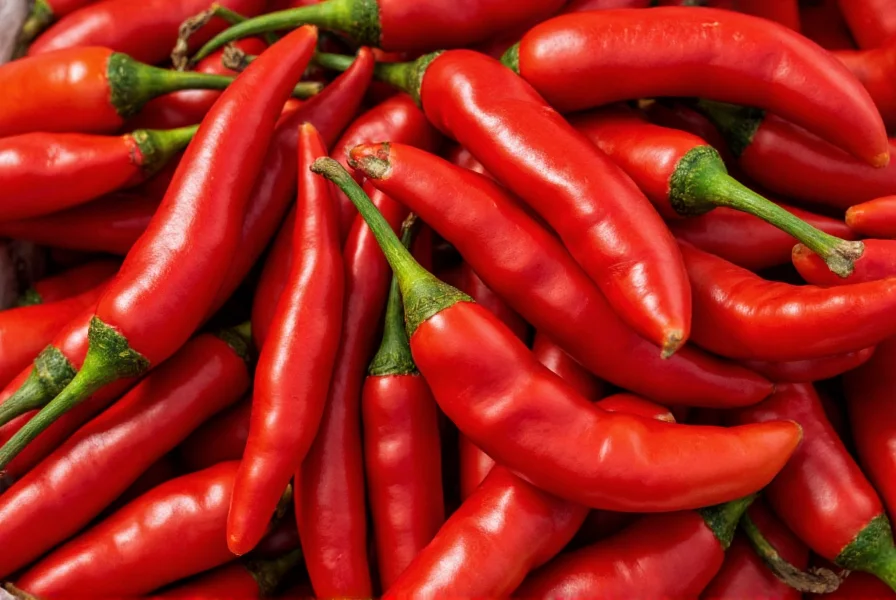Understanding the true origin of chili peppers reveals a fascinating journey that transformed global cuisine. Scientific research confirms that Capsicum species evolved in the Western Hemisphere, with the earliest physical evidence discovered at archaeological sites in Mexico. These fiery fruits weren't just culinary additions—they played significant roles in ancient Mesoamerican civilizations long before European contact.
The Ancient Roots of Chili Peppers
Archaeobotanical studies have uncovered chili pepper remnants in the Tehuacán Valley of Mexico dating back to 6000 BCE. These findings represent the oldest known evidence of chili domestication. Early cultivation likely began with Capsicum annuum, the species that would eventually produce varieties like jalapeños, serranos, and bell peppers. Indigenous peoples selectively bred wild chili plants for desirable traits, establishing agricultural practices that sustained communities across pre-Columbian America.
Chili peppers held profound cultural significance beyond sustenance. Ancient Maya and Aztec civilizations incorporated them into religious ceremonies, medicinal preparations, and as valuable trade commodities. The Nahuatl word "chilli" entered European languages following Spanish contact, preserving the indigenous terminology for these pungent fruits.
Scientific Classification and Evolutionary History
The genus Capsicum belongs to the nightshade family (Solanaceae), which also includes tomatoes and potatoes. Five primary species were domesticated in the Americas:
- Capsicum annuum (most common cultivated species)
- Capsicum frutescens (includes tabasco peppers)
- Capsicum chinense (includes habaneros and Scotch bonnets)
- Capsicum pubescens (includes rocoto peppers)
- Capsicum baccatum (includes aji peppers)
Genetic studies indicate that wild chili ancestors evolved approximately 19 million years ago in what is now the Andean region of South America. Over millennia, natural selection and human cultivation produced the diverse varieties we recognize today. The pungency that defines chili peppers—the compound capsaicin—evolved as a defense mechanism against mammalian predators while still attracting bird dispersers.
| Chili Species | Primary Origin Region | Notable Varieties | Historical Significance |
|---|---|---|---|
| Capsicum annuum | Mexico/Central America | Jalapeño, Serrano, Bell Pepper | Most widely cultivated species globally |
| Capsicum chinense | Amazon Basin | Habanero, Scotch Bonnet | Misnamed as 'Chinese' by early botanists |
| Capsicum frutescens | Central/South America | Tabasco, Malagueta | Key ingredient in early hot sauces |
| Capsicum baccatum | Andes Mountains | Aji Amarillo, Aji Panca | Integral to South American cuisine |
The Global Journey of Chili Peppers
The Columbian Exchange dramatically altered the trajectory of chili peppers. Christopher Columbus encountered them in the Caribbean in 1492, mistakenly identifying them as variants of black pepper (Piper nigrum). Spanish and Portuguese traders subsequently introduced chili peppers to Europe, Africa, and Asia during the 16th century.
Remarkably, chili peppers integrated rapidly into culinary traditions worldwide. Within decades, they became essential ingredients in cuisines from Thailand to India to Hungary—regions now synonymous with chili-forward dishes. This swift adoption contrasts with other New World crops that faced resistance in foreign culinary contexts. The adaptability of chili plants to diverse climates and their preservative qualities contributed to their global success.

Modern Understanding of Chili Domestication
Contemporary research combines archaeological evidence with genetic analysis to refine our understanding of chili domestication. Studies of starch grains and phytoliths preserved in ancient cooking vessels provide physical evidence of chili use where organic remains haven't survived. DNA sequencing reveals complex patterns of selection that produced today's diverse chili varieties.
The original wild ancestors of domesticated chilies still grow in specific ecological niches across the Americas. Conservation efforts now protect these genetic resources, recognizing their importance for future crop improvement. Understanding the complete history of chili peppers—from their evolutionary origins through domestication to global dissemination—provides valuable context for appreciating their enduring culinary and cultural significance.
Frequently Asked Questions
Where exactly did chili peppers originate?
Chili peppers originated in what is now modern-day Mexico and Central America. Archaeological evidence from the Tehuacán Valley in Mexico dates chili domestication to approximately 6,000 BCE, making this region the confirmed birthplace of cultivated chili peppers.
How did chili peppers spread from the Americas to the rest of the world?
Chili peppers spread globally through the Columbian Exchange after Christopher Columbus encountered them in the Caribbean in 1492. Spanish and Portuguese traders introduced them to Europe, then to Africa and Asia during the 16th century, where they rapidly integrated into local cuisines despite being foreign introductions.
Which chili species was first domesticated by humans?
Capsicum annuum was the first chili species domesticated by humans. This species includes many common varieties like jalapeños, serranos, and bell peppers. Archaeological evidence shows its domestication began approximately 6,000 years ago in Mesoamerica, where indigenous peoples selectively bred wild chili plants for desirable traits.
Why are they called 'chili' if they originated in the Americas?
The term 'chili' comes from the Nahuatl (Aztec) word 'chilli,' which Spanish explorers adopted when they encountered these peppers in Mesoamerica. Despite Christopher Columbus mistakenly believing he had reached India and calling them 'peppers,' the indigenous name persisted in many languages, preserving the authentic cultural origin of these plants.
What evidence do we have about ancient chili cultivation?
Archaeologists have found multiple lines of evidence including preserved seeds, starch grains, and phytoliths in ancient cooking vessels from sites in Mexico dating to 6000 BCE. Additionally, chili residue has been identified on pottery fragments, and ancient artwork depicts chili peppers in cultural contexts, confirming their importance in pre-Columbian societies.











 浙公网安备
33010002000092号
浙公网安备
33010002000092号 浙B2-20120091-4
浙B2-20120091-4